|
|
 |

|
 |
Dusted Features
Derek Taylor offers snapshots from New York City's largest free jazz celebration.
|
|
|
 |
Leading the Blind to See: Three Days at the Vision Festival 2003
Creative improvised music in the United States has long held a tenuous position when it comes to funding and financial support. The situation is even more uncertain amidst the current conservative political climate that plagues our government. When it comes to cutting costs and confronting the daunting task of deficit reduction, arts and educational programs always seem first on the chopping block. The fact that the Vision Festival has managed to survive through eight incarnations in the face of such realities is a feat to both celebrate and take stock in. That a community-based collective of musicians, artists and performers can find the resources and backing to share what they do with the public at large, and still retain autonomy in the bargain sets an inspiring precedence for the viability of the creative endeavors in this country.
The Festival has its roots in an earlier effort, first hatched by New York native William Parker and the German bassist Peter Kowald, who sadly passed away last year. Kowald came to the city in the summer of 1981, a large stipend bankrolled by artist H.R. Penck in hand, with the directive to “make something happen.” Organizing at the grass roots level and enlisting musicians from across the free jazz spectrum, Kowald and Parker created a showcase for the music that still has sway on the Festival’s structure today. Venues and schedules have changed over the years, but the same basic credo of community empowerment and self-determination still underlies the enterprise today in its current form as Vision. Some interpret this attitude as insular and it contributes to criticism from within the larger music populace. Others see the same faces featured prominently from year-to-year as evidence of nepotism and exclusivity. But to be fair, the organizers and participants have never made any allusions that the event isn’t a family affair. Vision seems a forum first and foremost for those who put the work into its fruition and one can hardly begrudge it for that.
I’ve had the opportunity to attend three previous festivals and each one was filled with memorable experiences both musical and otherwise. The published schedule for the eighth annual edition hinted at comparable levels of excitement. Due to schedule restraints I was regrettably only able to catch three of the six days. Held in the gymnasium of the St. Patrick Youth Center nestled on Mulberry Street, the Festival wears its populist trappings proudly and prominently. Metal folding chairs and a performance stage hand-decorated with variegated handcrafted artwork are the most immediately striking features. A bare bones merchandise table set up near the entrance and staffed by reps from various small independents labels is a constant draw between sets. Directly stage right sits the concession stand, a literal hole-in-the-wall with a revolving menu of home-prepared dishes and a small selection of beverages. At last year’s fest, Peter Kowald staffed the stand religiously, assembling sandwiches with as much enthusiasm as he brought to creating music on his bass. This year’s culinary coup d’état was William Parker’s spicy chicken wings, which arrived sizzling in bulging aluminum trays and were a bargain at a buck apiece.
Wednesday, May 21st
One of the immediately apparent elements of the Festival is the pervading feeling of solidarity and support that suffuses the setting. Musicians of all sorts, both popular and obscure, mix amongst the crowd along with writers, photographers, dancers, visual artists, fans, and folks who don’t fit into any of those ascribed types. The most surprising of these this year was bassist Henry Grimes, a 30-year casualty of the music only recently returned to the fold. Grimes’ presence as unstated second festival honoree beside the formal dedicatee, departed singer Jeanne Lee, further added to the presiding aura of creative rejuvenation. In the informal environment of the school gym, it was almost as if a talent show was about to commence.
One fixture at every Fest is Jeff Schlanger, The Music Witness. Positioned stage side, his panoply of brushes and pigments surrounding him like a small bivouac, he sits ready to record the sounds with sweeping strokes of his various implements. Schlanger’s been translating free jazz into painting for several decades and his method of documenting a performance in real-time is something truly special to watch. By the end of a night’s proceedings he, and those sitting in close proximity to him, are speckled and flecked with rainbow splotches of errant paint.
Another tradition, one that was regrettably suspended this year, is Joseph Jarman’s Buddhist invocation, a chant processional designed to provide a spiritual start to the event. Stepping in his stead, Patricia Parker conducted an awkward group meditation that felt forced and uncomfortable and served as a dubious replacement. But when Joe Maneri took the microphone, all of the discomfort melted away. Playfully mugging to the audience, snowy Santa Claus beard in full bloom and bald-pate shining brightly under the stage lights, The Round Man spoke: “Since I have an amazing voice, I’ve been asked to speak for a few minutes.”
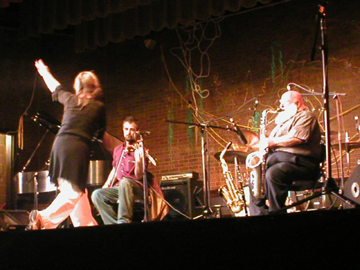
After killing the necessary time, his son Mat soon joined on him on stage and the two began with a duet of silver-hued tenor and electric violin, with Mat’s wife, Christine Coppola Maneri, interpreting their music through dance. The elder Maneri loosed dry rustling microtones from his reed that slowly turned acrid and briery while Mat wove sliding string shapes with sudden bass-register plucks, making spry use of his amplification to further forward his father’s momentum. Christine listened intently, responding to the shifting abstract textures with angular leaps and mechanical body movements that incorporated elements of mime. Drummer Randy Peterson eventually strode on stage, completing the group and working his kit from a restrained position that gradually built and released tension through stuttering stick volleys. Joe’s face quickly turned beet red, a thin film of perspiration beads bordering his brow, as the bellowing tone of his tenor rose in volume and size. Mat responded with seesawing arco strokes and Randy stirred up a swirl of press rolls from his snare drum.
The Maneri Trio’s music encompasses an incredible dynamic range from ghostly soft to stentorian loud. There are points where their improvisations almost sound operatic in scope, with swells and valleys creating the semblance of rhythmic movement even in the absence of a countable meter. Joe later turned to clarinet and alto, favoring high register flutters and low staccato clucks. Mat hoisted acoustic viola, once again braiding with his father in a thoughtful conversation of near telepathic rapport.
For the set’s third piece, Joe sat at the Steinway and crafted a solo laced with snatches of stride melody. Violin and drums shaped a close accompaniment only to diverge into their own individual explorations later in the piece. Another knotted improvisation from Joe’s coughing alto lagged a bit, but was bolstered by a pummeling turn by Peterson whose sticks seemed a blur across the surfaces of his kit. Christine rejoined the trio for the final two pieces, engaging in an expressive dance/violin duet with Mat and responding energetically to a final trio piece led by Joe’s hoary tenor.
A short intermission and the night’s second ensemble, DJ Spooky, Carl Hancock Rux and Stephanie McKay finished setting up. Spooky’s dual turntable console and Apple laptop sourced a string of atmospheric beats, paving the way for the vocalizing duet of Rux and McKay, who referenced a revolving round of Afrocentric themes in keening falsetto and deep baritone. Lyrically the pair was quite effective at painting vivid images through biting satire. One piece found Rux juxtaposing the glories of past African civilizations with the dystopian present, a landscape rife with disposable life and the resounding gunfire of Glocks and Tech Nines. Another piece broke down the fourth wall with Rux directly admonishing the audience for its passivity and challenging it to speak up and speak out. Throughout it all, Spooky’s ethereal patterns spun and spiraled creating a fluid and often-funky backdrop for the rhythmically charged lyrics. McKay’s role diminished as the set progressed, but Spooky eventually annexed a section unaccompanied and it was a welcome chance to hear him build an organic sonic sculpture from pre-processed and real-time loops. Many in the audience who had come expressly to hear free jazz were left scratching their heads in the wake of the short set, but it’s this sort of inclusiveness of other creative conduits that speaks to the strength of the Fest.
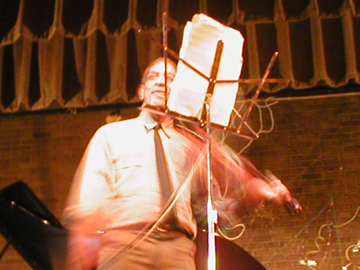
After another break to clear all of Spooky’s accoutrements, the Billy Bang Sextet assumed their places atop the stage. Sharing the front line, saxophonist Frank Lowe looked particularly gaunt and apprehensive, his signature dreadlocks shorn from his scalp as the result of recent lung surgery. In person Lowe can be intimidatingly intense. He takes his role as a musician very seriously and the gravity of his expressions contrasted with the relative joviality of the rest of the band. Pianist Andy Bemkey, wearing an uncustomary sport coat, sat ready at the ivories, while Tatsuya Nakatani and Tyshawn Sorey swiftly prepped their respective drum kits. Situated unassumingly between the two, bassist Todd Nicholson stood at the ready. Bang, dressed to the nines in a sharp-looking suit, quickly tuned his violin and the band was off into an orchestral opener. Lowe and the leader were a study in contrasts from the start: the former trafficking in terse shrieking, looking almost seraphic in the light, the latter measuring out corkscrews of tones with his bow. A problem with Frank’s monitor set the saxophonist to scowling and wiping down the heavy sweat from his jowls. Unfortunately it was a harbinger of troubles to come as Bemkey, distantly miked, and Nicholson, over-amped into rubberiness, dove into respective solos that were muddied by sound flaws.
On “Dark Silhouette”, a piece dedicated to the obscure musician Black Herman, Bang’s amp fizzled out completely, forcing him to the sidelines as Bemkey assumed the lead with the scraped and scuttling percussion of the drummers in tow. Bang’s mood worsened and it looked as if they might call a quits to the set, but some swift tinkering on the part of the sound engineer and his strings were once again stitching ribbons of melody through the strains of his own “At Play in the Fields of the Lord”. The band really came together on this one, launching collectively into a skyward groove but never straying so far out as to loose tether to the singing theme. Perhaps more than any other player in the Vision bullpen, Bang has the ability to unhinge my jaw and raise my awe with his over-the-top string-spindling solos. No matter how far a field they roam, his rambunctious improvisations always stay couched in an unremitting all-inclusive swing.
“Nothing But Love”, credited to Dr. Too Much, Lowe’s playfully nom de plume, matched nursery-rhyme simplicity with a completely endearing melodic innocence. Bemkey’s dancing chords spread tenacious harmonic glue as Lowe’s brawny tenor soared into altissimo squeals. The drummers locked into a steel band street march cadence laden with funky syncopation and Bang signaled a stop, sudden and perfectly regimented. Closing the set with “Moments from the Ka Mia”, a piece from Bang’s highly personal musical memoir Vietnam: the Aftermath, and “Jupiter’s Future”, a feature for Lowe’s curved soprano that finds Bang quoting brilliantly and blisteringly from Sun Ra’s Space is the Place, the band had the audience on its feet in a near unanimous ovation.
The succeeding group was the somewhat skeptic-inducing trio of vocalist Patty Waters, pianist Burton Greene and bassist Mark Dresser. Greene and Dresser have played together on various occasions and even have an album together on CIMP. Each is an accomplished artist on his instrument, but Waters has been away from the scene for many years, a former member of the ESP records roster who later left the music to pursue other interests. Her return to the New York stage was anticipated by some, but doubted by others and sadly her uneven set seemed to corroborate at least in part the opinions of the naysayers.
Stepping onto the stage and visibly and understandably nervous, Waters stood draped in gothic black dress, rigid before the microphone, speaking out brief introductions before deferring to the duo of Dresser and Greene. This was the tack for the majority of the concert with Waters only singing a handful of pieces. Greene’s “Digitville”, a mediation on modern anomie, allowing ample room for the two men to interact through a call-and-response circuit of sweeping string slaps and under-the-hood piano tinkling. Waters’ take on the Billie Holiday staple “Strange Fruit” was haunting, but ultimately unsatisfying. Her hoarse cry fit the dirging lament of the tune, but the very real foibles of her voice were also nakedly apparent. Ornette Coleman’s “Lonely Woman” came across as a mere fragment with Waters’ singing/speaking just the chorus before rustling off stage and leaving the lion’s share to her partners. Her intonation and phrasing proved far more confident on a rundown of another Holiday-associated song “Don’t Explain”. Two originals, “Holiday Moon” and the starkly titled “Love” concluded the set. On the latter, Waters’ coarse cries “love” hung quavering against a dense vertical backdrop of staccato piano and spidery bass lines. The effect was mesmerizing and almost made up for the performance’s earlier pratfalls. Recognizing the courage it took for Waters to assume the stage in the first place, the audience rewarded her with warm applause. It was a positive and affirming way to cap off the night.
Thursday, May 22nd
Due to a subway mishap I was late in arriving for Night Two and only caught the final notes of the opening Bill Smith Project, though from what folks told me, the ensemble delivered a beautiful mix of Eastern and Western influences. The David S. Ware Quartet, second on the bill, assembled soon after and wasted little time in commencing to blow. Ware and his compatriots are one of the veteran regular bands on the scene with the core line-up of the saxophonist, pianist Matthew Shipp and bassist William Parker having been a team since the early ’90s. Drummer Guillermo Brown is the most recent addition, but even he’s been around for a fair number of years. Expectations were high and unfortunately the ensemble only partly delivered.
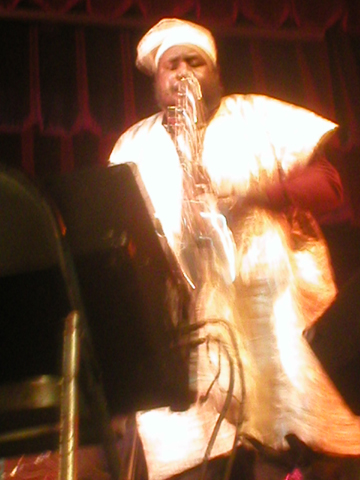
Ware, clad in billowing muumuu-like garb that gave him an angelic appearance, hunkered down between two monitors and let loose with a throaty blast that coalesced into a cascade of ecstatic vertical lines. Though he generated quite a head of steam with this opening volley, there wasn’t a commensurate amount of heat. Shipp spooled out sheets of piano beside him; Parker sliced low, almost subsonic arco lines in between. Brown moved almost immediately into a groove as the saxophonist continued his skyward assault. Minutes later Ware trailed off and the trio was left to continue the improvisation, which eventually contracted into a solo by Parker that traveled the same narrow section of his fingerboard. Brown’s drums joined the action minutes later and the pair traded chops, achieving a weird echo-dub effect through radiating bass figures and a repetition of snare syncopations. The exchange went on a bit too long, but the effects were strangely trance inducing until Ware hoisted his horn and touched off again with another stream of florid phrases. Shipp followed suit carving out striding block chords that skidded to a sudden and seemingly unintentional stop for the piece.
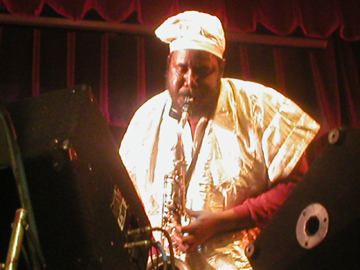
Leaving only scant seconds for intervening silence, all of the band save Brown stood back and the drummer earned some solo space. Moving from a snare/bass drum cadence into a more melodic direction, his extemporization had solid locomotive momentum, but a rather rigid linear trajectory. His rhythmic approach shifted with the entry of Shipp and the two further prepped the way for Ware’s tenor, which blasted forth in another extended eruption. Circular breathing and a rushing tide of gritty-grained tones fueled Ware’s testimony, making way for a stomping call-and-response section between his flashing silver horn and the rhythm section. A brief blues march closed out the set with Ware spacing out a mournful dirge between spoken band introductions. Another note-packed saxophone solo, dishearteningly similar to those that preceded it, signaled the end. While undeniably impressive in appearance, the band just seemed a bit off, falling into a rut of familiar roles and combinations and doing little surprise in the process. They’re capable of much more. Even so, the audience sounded pleased enough as rampant applause gushed out in response to the band’s finish.

The next set brought the stolid aspects of the Ware set into sharp focus. A of visiting Chicagoans, Fred Anderson and Harrison Bankhead built on their sparse duo instrumentation in ways few audience members probably predicted possible. The saxophonist and the bassist share a close affinity born out of countless gigs together in the Windy City, many at Anderson’s own haunt, the Velvet Lounge. With bass strings as sole harmonic and rhythmic foil, Fred showed off a side of his playing that is only slightly represented in his now respectable discography on Chicago Chamber Music. Working off a string of warmly inviting blues figures, Anderson swung through his stock selection of melodic curlicues, adding and embellishing as the mood struck him. Bankhead answered with a stunning series of melodically charged ostinatos, eventually engaging in a solo that made brilliant use of his amplification along with vocal hums and flamenco strums that directly recalled the work of Coltrane’s bassist Jimmy Garrison.
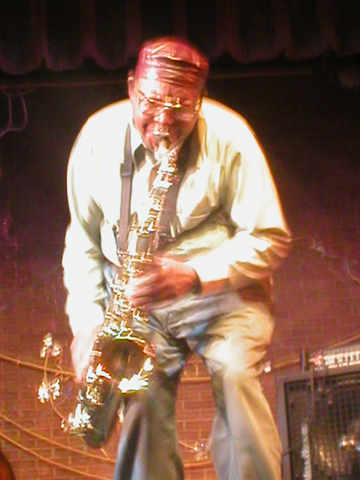
For their second piece, Bankhead unsheathed bow and shaped a softer filigree feel of a lullaby, bowing around Anderson’s lines, accompanying, but also enveloping and accentuating. Throughout it all, the absence of a drummer was hardly noticed and the degree to which these two were listening was a lesson for all in attendance. For the final call-and-response piece, the pair ran through a funky vamp, encouraging the audience to clap and whistle in ebullient approval. Incorporating the reactions into the piece, Anderson riffed on top of the rhythm, even quoting variations from his signature song “Dark Day” at one point, much to the delight of many. I’ve heard Bankhead play in numerous settings, but never with the keen ear and pristine touch he applied here.
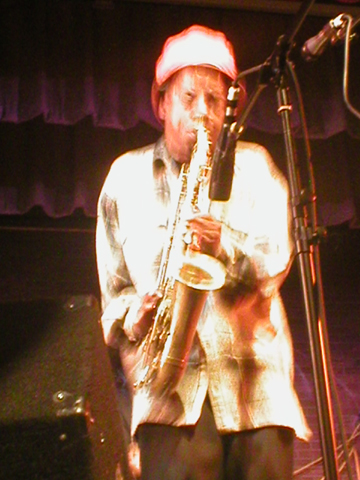
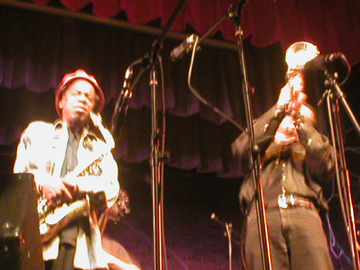
The night’s final offering was the somewhat curious combination of the Jemeel Moondoc-Connie Crothers Quintet. Saxophonist Moondoc’s been a festival regular for years, but pianist Crothers, a former student of Lennie Tristano isn’t normally associated with the New York scene. Joining the two principals were Nathan Breedlove on trumpet, Adam Lane on double bass and John McCutcheon on drums. Lane was the epitome of intensity from the onset, hunched over his instrument and grimacing in concentration above a baggy black t-shirt soon to be soaking in sweat, wrestling with his bass strings and wringing out boldly patterned lines. McCutcheon looked the opposite – clad in an ill-fitting linen-suit and coke-bottle spectacles, he was the spitting image of oddball illustrator R. Crumb. His laidback, but muscular beats fit well in the context of Lane’s more overtly energetic bass lines. Crothers was somewhat separate from the band spatially, her piano pushed off to one side, but Moondoc stood closely together at the central thicket of microphones making for easy and close interaction.
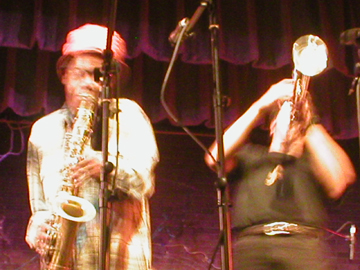
Individual songs moved swiftly one to the next with the horns often arcing above the dense accompaniment of the rhythm section. Moondoc would shuffle up for a solo on alto, creating dry angular chains of notes only to lay out and defer to Breedlove’s pungently direct brass. It was these moments that were most gratifying visually, watching the elder fold his hands over his horn, shut his eyes and drink in the sounds of his partner, a broad beaming grin spreading over his face. Crothers astute comping was often more interesting than her solo sorties, but the rhythm team of Lane and McCutcheon routinely pushed the primary soloists in harmonically challenging directions. The bassist’s finger-flaying solo towards the middle of the set had me wondering how his strings were able to stay strung in their housings. Responding to the energy uncapped, Breedlove leaned back and let fly with one of his most boisterous locutions of the night, a blurring spray of notes that radiated out at rapid-fire speed. Through it all, Moondoc just smiled and seemed right at home in his element. Despite the seeming pick-up nature of the band, these five players demonstrated beautifully why this music could be played anywhere and at anytime. While undeniably cliché, it’s all about grasping the moment and going for broke.
Friday, May 23rd
My final night at the Fest promised monumental happenings. The roster read like an energy music banquet par excellence, particularly the final three acts, each among the most superlative on the scene. First up though, the Chicano poet Edwin Torres and Sean Meehan on snare drum and cymbals. Torres’ set started out interesting with personal anecdotes and imagery conveyed in a loosely rhyming, rhythmically adroit style. Some of the stories told and thoughts unveiled had genuine resonance, with the poet reflecting on incidents from his childhood and experiences with bigotry and intolerance rolling out in a freewheeling style of verse. But things quickly took a turn towards the self-indulgent and haphazard as he donned a cape and began speaking in vocalese gibberish. Meehan birthed a variety of oblique beats on his skins to help diversify the content, but I couldn’t shake the sense that Torres simply ran out of ideas and had to resort to histrionics to fill the gaps. Mercifully the set was brief, leaving the stage clear for the musical trio of Kali Fasteau on soprano saxophone, cello, keyboards and various ‘little’ instruments, Mixashawn on reeds and flute, and veteran drummer Newman Taylor-Baker.

Dancer Maria Mitchell joined the trio and cut a stunning figure in brightly hued yellow dress. Her dervish-like movements made use of the entire stage floor, gliding in swooping leaps and spinning airborne pirouettes that were as vigorous as they were graceful. Under the glowing stage lights, her constantly moving form complimented the passionately rendered music perfectly. Fasteau’s breed of improvised music is heavily steeped in globetrotting influences. In her youth, she traveled extensively with partner Donald Raphael Garrett, soaking up Asian, Arabic and African influences through their peregrinations. Her approach is highly non-idiomatic, to the degree that some have questioned her abilities, pegging her as a dabbler in many instruments, but a master of none. She more than compensates any compromise to technique in the passionate verve she brings to her music. This particular performance marked one of her first integrations of electronic sounds and the results were mixed.
During the performance, Mixashawn’s hard, stoic tenor routinely adopted spiritual overtones, referencing Coltrane and soaring above the rolling sticks of Taylor-Baker. Fasteau’s harp-like synthesizer tones expanded the dynamics, making the trio seem far larger than the sum of its individual parts. Hoisting a miniature double-reed instrument, she used slight microphone delay to create a wavering and haunting stream of split tones. Each of the early pieces favored ascending, vertical figures with Mixashawn’s horn blustering through cavernous lower-register gusts for contrast. Fasteau eventually moved to piano, going under the hood and striking the strings with drumsticks to create scraping zither sounds alternating with beautiful suspended chords. Gliding above in hard legato swathes, Mixashawn formed the aerial compliment to Newman-Baker’s terrestrial thundering toms. Later pieces emphasized a more percussive bent with Mixashawn switching to flittering recorder while cello and drums met in a confluence of funky rhythms and oscillating drones. Mitchell, still adorned in glowing goldenrod dress, used the layered music as a springboard for an incredible array of athletic and acrobatic moves, using the entire stage as her stomping ground. A hypnotic keyboard interlude by Fasteau that conjured the mental image of warring Magellenic Clouds and a final horn blowout of tenor and soprano with electronic additions ended the extravagantly eclectic set.
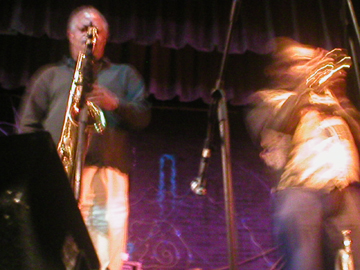
As interesting and entertaining as Fasteau’s set was, it still left the lingering impression of a band attempting to cram too much into the short duration allotted. The Joe McPhee/Roy Campbell Quartet hit the stage from a more traditional free jazz source. Joining the two leaders’ horns, William Parker’s bass and Warren Smith’s drums served as an ideal fuel source to fuel the fireworks to follow. Opening in tight formation on soprano saxophone and trumpet, the co-conspirators commenced in harmonizing loosely over Smith’s compactly clustered press rolls and Parker’s anchoring vamp. McPhee’s nasalized inaugural solo was soon overshadowed by Campbell, who came on like a hopped up Lee Morgan, strafing up and down registers before veering suddenly into soft lyricism. Parker’s solo suffered from excessive amplification, turning his notes cavernous and diffuse and causing them to smear and thud into each other. The high harmonics of his bow work were also lost to the scourge of errant electricity, but Campbell’s muted return saved the tune from imploding.
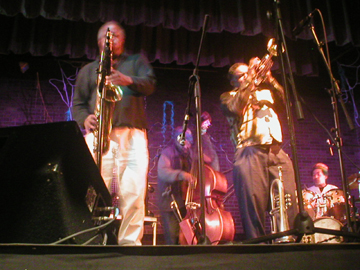
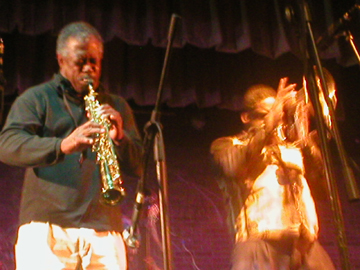
The next piece turned out to be one of the humorous highlights of the night, a poem set to music much in the same vein as Mingus’ immortal “Fables of Faubus”. Setting the scene through narration, Campbell spoke of “Jurassic Park, Washington, D.C.” and the various prehistoric beasts that roam its regions including Condaleezadactyles, Chaneysauruses and the most formidable of all, Tyranabusho Rex. Parker supplied a deeply grooving bass line on zintir, an African bass lute and McPhee added aggro honks on blustery tenor sax. Roy turned to a double-reed horn, setting up a drone beneath McPhee before returning to trumpet for another molten blowout. Parker accelerated his fingers, energizing the band with hummingbird bass thrums that effectively broke the shackles of his earlier muddy sound and McPhee planted a church-born melody on top with emphatic reed-crinkling shouts.
Smith initiated the next piece solo, in a drum improvisation that was impressive in its controlled force. Starting with sticks on rims and moving to abrasively rubbed floor tom, he knocked a mic stand over with the muscularity of his strokes. Parker commanded attention next with a statement that found him torquing his strings to create flanging tones with blindingly applied bow. Sensing that the bassist could and might go on indefinitely, Campbell subtly, but confidently strode forward and started playing, silencing Parker and causing him to sheath his smoking bow. Far from seeming offended, a broad smile creased Parker’s face, showing they had caught him overindulging and he knew it. For the set’s final piece, Campbell dusted off flute blending with McPhee’s tenor on a slow and contemplative modal theme. Sparse pizzicato bass and swishing brushes elaborated on the atmospheric mood to the point where the piece appeared in danger of unraveling in the absence of an agreed upon direction. But the horns soon locked in a braid of tight harmonies atop a propulsive vamping groove and Campbell’s expressive growls stoked a much-needed flame alongside McPhee’s roaring tenor. Together they galvanized a fine finish to an already energy-stacked set.
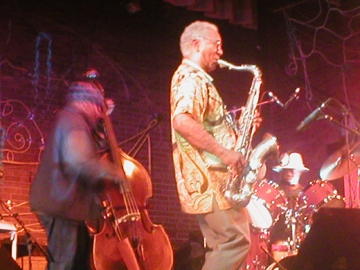
Parker barely had a breather before he was called on stage once again to join living legends Kidd Jordan and Andrew Cyrille on stage for the next performance. If ever there was proof of the bassist’s unflagging stamina this was it, as he was required to serve as harmonic sparkplug for Jordan’s seemingly unquenchable tenor and the multifarious rhythms of Cyrille’s storied kit. As expected, the trio dispensed with pleasantries and rocketed out of the gate on the back of an ear-bending improvised drum prelude by Cyrille. Emphasizing an astounding array of loud and soft dynamics, the drummer crafted a sea of spiraling beats moving form Calypso-like syncopations to bombastic bursts. Parker, bleeding sharp arco lines, eventually joined him with Jordan’s squalling tenor bringing up the rear. The saxophonist rarely tempered his onslaught, opting instead for a near continuous flood of keening phrases and upper-register squeals. Cyrille’s rhythms were a fitting opposite, full of spikes and troughs, rolling, ebbing and building like expanding thunderclouds on a rapidly darkening horizon.
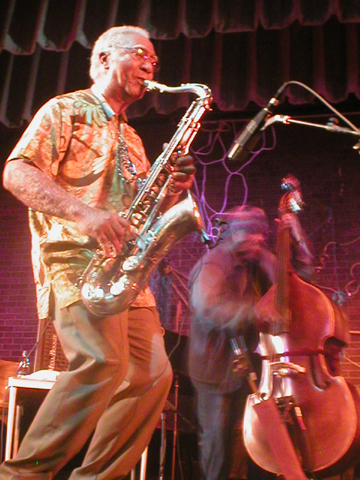
Jordan’s tunnel vision was far from disconcerting. The focus with which he worried the same figures, reshaping them into near countless permutations and running through virtually every conceivable register on his horn was in its own way an ideally realized response. Parker’s approach was similar, hammering out the same variations from his strings in the form of morphing ostinatos and blurring string harmonics. Mid-point through the set, Cyrille seemed to realize that Jordan wasn’t likely to defer so he did something astonishing. Straying from the surfaces of his kit he started playing everything within reach: floor, seat, drum stands, even the sticks themselves and the air space around them, before getting up and engaging Parker in a mock duel; feinting and thrusting with his sticks at Parker’s body and bass, and miraculously keeping the rhythm going. Dancing in circles around Parker, Cyrille soon had the audience on its feet applauding at his audacity and ingenuity. The even funnier thing is that Jordan just kept right on blowing for a spell, unperturbed, at least on the surface, by the spectacle. It was an unforgettable moment and one that was the highlight of the festival for me.
The final ensemble of the night had quite an act to follow and the challenge of rejuvenating an audience that had already been privy to two of the hardest blowing free jazz bands around. Such a daunting prospect hardly registered on the faces of trumpeter Raphé Malik and Sabir Mateen, so secure were they in their own abilities and those of their partners, bassist Larry Roland and returning drummer Warren Smith. Opening with a Don Cherry-reminiscent composition with a stuttering head that matched Malik’s sharp staccato trills with Sabir’s shrieking tenor, the group immediately erased any doubts as to whether they could command attention for the duration.
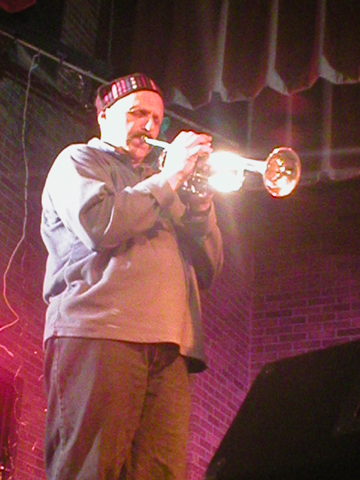
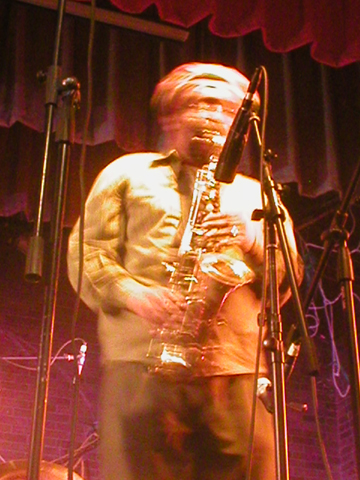
Roland’s strings repeatedly wove strong, unyielding patterns through brittle, prickly strumming while Smith’s more spacious percussion style was routed in equally aggressive inclination. Mateen seemed to respond in kind, cycling through his reeds and over to flute in almost methodical succession. Malik’s tone was sharper and cleaner than Campbell’s, and I couldn’t help likening the differences between the two musicans to the free jazz equivalents of Freddie Hubbard and Lee Morgan by way of mental comparison. Each of the pieces made sample use of the ecstatic volatility on hand, but Malik’s compositions also highlighted agility in line with strength. The band’s second collective sortie was filled with lots of hairpin harmonic curves, specially suited for Mateen’s sliding register howls. Roland and Smith carved out another mammoth vamp behind the horns and the audience was largely silent as the horns converged in a wailing run through wavering, breakneck intervals. The final piece employed Mateen’s alto sax, bass clarinet and vocalized flute to spectacular effect and also found Malik trading in clean metallically burnished Marachi lines. Careening into silence, the band stood fast as the exhausted, but fully satiated, audience showered them with handclaps and shouted accolades.
Collecting my gear, I headed for the exit, and as fate would have it, Friday was to be my final night at the fest. From the accounts of friends and colleagues, I gather that successive days were just as eventful, culminating in the large ensemble tribute to Jeanne Lee featuring five vocalists and a band led by William Parker. Once again the Vision Festival excelled at presenting the width and breadth of New York’s Downtown scene. As explicitly stated, its purpose is to raise awareness of the music by providing a forum. Many are necessarily and sometimes intentionally left out of the process and the result. Still, festivalgoers would be hard-pressed to find this level of collective and concentrated talent under one roof during any other week of the year in New York. Curated festivals at Tonic and the Knitting Factory come close, but Vision is still the largest and most generously packed event of the year.
Last year’s Fest seemed to take things to a logical, if ill-advised, extreme by spreading performances out over a sprawling two week stretch. There were so many performers appearing at such a relentless pace that the effect was overwhelming. This year, Patricia Nicholson, William Parker, and the other organizers wisely reined things in, creating a more cohesive whole while compromising little in the way of programmatic diversity. It’s a shift in philosophy that will hopefully carry through to next year. Until then there’s the interim to focus on, drumming up funds and organizing the logistics, keeping the community and scene healthy and alive. I’m definitely planning on making the pilgrimage again.
Special thanks to photographer Ted Sonnenschien & Jim Eigo for helping make this article possible.
By Derek Taylor
|







